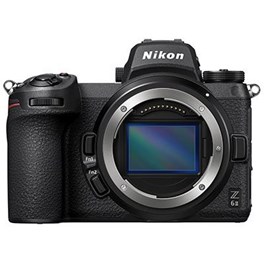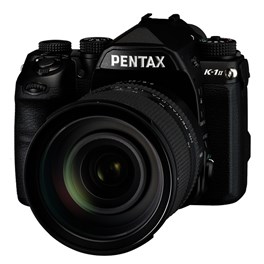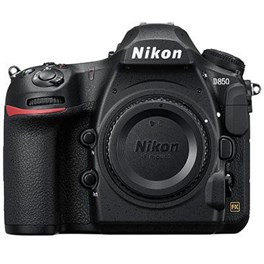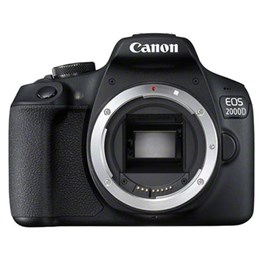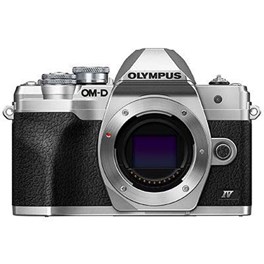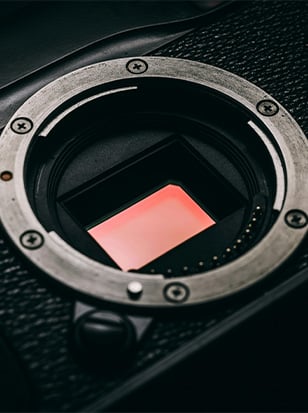
The best cameras for astrophotography are an essential tool for a challenging discipline. Photographing the night-sky can be a wondrous thing, and it’s very possible that once you get the bug for it, you’ll be hooked for life. However, getting an image that shows off the night sky can be a tricky thing – it requires patience and technical precision. You can’t just point upwards and hope for the best.
So, we’ve picked out the cameras that will make it a little easier for you to capture fantastic astro images. Whether you choose to shoot with the camera mounted to a telescope for deep-sky imaging, or just plan to use a tripod in your back garden, these are the best cameras to buy.
Ideally when picking an astrophotography camera, you want something with a nice big sensor that can deliver crisp, clean images in low light. You want access to plenty of wide-aperture lenses, and to be able to shoot in RAW format for post-processing. Many will point to a full-frame mirrorless camera or DSLR as being the best pick, and we’ve included plenty of these in the guide. However, if you’re on a budget, this may not be practical, so we’ve also added a few smaller-sensor cameras that punch above their weight. Finally, for those with deeper pockets looking for something more premium, medium format cameras with their extra-large sensors can produce absolutely spectacular astro imagery if handled correctly.
Read on as we help you get started with the best cameras for astrophotography…
Best Mirrorless Camera for Astrophotography
We’ve started out by looking at mirrorless cameras, which offer a lot to the prospective astro shooter. Lightweight but powerful, modern mirrorless cameras run the gamut from top-end pro shooters to smaller, more entry-level models. Mirrorless cameras tend to be very versatile, great both for starry sky images and deep-sky shooting. With big ranges of lenses and the latest up-to-date features, a mirrorless camera is an excellent place to start when it comes to astrophotography.
We’ve included a few different options in this part of the guide. A full-frame sensor is fantastic if you can get it, and we’ve made sure to pick some full-frame options that are relatively sensibly priced. However, it isn’t the be-all and end-all, and there are some cameras with smaller sensors that offer a lot of creative extra features for astrophotographers. So, we’ve included more to get you thinking about what you might need.
Sony A7 III Digital Camera Body
The Sony A7 III Digital Camera Body is the third iteration in the game-changing Sony A7 range. It comes upgraded with a back-illuminated 24.2-megapixel Full-Frame Exmor R CMOS imaging sensor, and the reinvented BIONZ X processing engine. The camera facilitates 4K HDR video capture and comes with 15-stops of dynamic range. Furthermore, it is capable of shooting 10fps, offers a fantastic ISO from 100-51200 as well as 5-axis image stabilisation all in a stylish, compact mirrorless system camera body.
£899.00 View
Pros:
- Broad dynamic range
- Does well at high ISOs
- Very good battery life (and can run indefinitely off USB power)
Cons:
- Menu system can be complex
This isn’t the newest camera in Sony’s A7 line, with the A7 IV having made its debut a couple of years ago. However, the main upgrades in the A7 IV were a higher-res sensor (which astro shooters don’t necessarily want) and a more sophisticated autofocus system (which astro shooters don’t particularly need). So, the cheaper A7 III is probably going to be the better choice for a lot of astrophotographers.
With impressive dynamic range and excellent high-ISO performance, the Sony A7 III delivers the goods when it comes to night-sky photography. Previous generations of Sony cameras were infamous for “eating” stars – smoothing them out with over-zealous noise reduction – but this issue seems to have been largely corrected by the introduction of the A7 III. With dual card slots, the A7 III gives you a way to ensure your shots are backed up in the event of card corruption, and its batteries last extremely well.
Nikon Z6 II Digital Camera Body
Finance available
Despite 2020 releasing a variety of contesting mirrorless camera bodies, Nikon's Z6 remained one of the top mirrorless cameras that you can purchase on the market. So, what does the Nikon Z6 II have in store for us? Nikon took on board all the user feedback that came back from the 1st-Gen Z6 to produce this vastly improved Nikon Z6 II camera body. Most notably, some additional features of this camera body include lightning-fast and incredibly powerful Dual EXPEED 6 image processors, vastly improved autofocus and tracking capabilities as well as the addition of a second card slot. Yes, the Nikon Z6 II features dual card slots, one for XQD & UHS-II SD cards and the super-fast CFexpress cards. The Z6 II also enables the use of a battery grip for pro-level shooting and vertical shooting controls. This camera offers everything that is needed for an enthusiast or professional hybrid photographer or filmmaker.
£1,149.00 View
Pros:
- Beautiful clear images
- USB-C hot charging
- 3.2-inch touchscreen
Cons:
- Screen not fully articulating
The original Nikon Z6 was a pretty excellent astrophotography camera, its full-frame sensor producing gorgeous images with excellent clarity, even in low light. The Z6 II is all that and more, with the addition of a few sensible upgrades, probably the most welcome of which is the additional SD card slot. Some reviewers felt it could have been a more comprehensive update from the Z6, but a lot of the things that were left unchanged (such as the cropped 4K video) aren’t too much of a bother for astro shooters.
With 24MP of resolution, the Z6 II is a more sensible choice for astrophotography than its high-res sibling, the Z7 II. It benefits from an absolutely superb range of lenses in the form of Nikon’s Z-mount – the S-line lenses in particular include a number of standout optics that are great for astro. Plus, you can use the FTZ mount adapter to field F-mount DSLR lenses too.
Best DSLR Camera for Astrophotography
DSLRs have been beloved by astrophotographers for many, many years now, and there’s no reason not to consider them just because mirrorless has become the more popular format. A good full-frame or APS-C DSLR will capture fantastic images of the night sky, and their rugged bodies are well-suited to withstand a night spent out in a dewy field – which you’ll likely be doing plenty of if you catch the astro bug.
We’ve focused on full-frame DSLRs in this section of the round-up (check out our budget section below for an APS-C suggestion). While Canon and Nikon are the big dogs in the DSLR world, don’t count out Pentax, as their DSLRs contain a few clever astro-focused features that could make them the superior choice if you’re serious about star-shooting. Though then again, you may prefer the broader lens ranges of Canon EF or Nikon F. It’s a tricky choice!
Pentax K-1 Mark II Digital SLR Camera with 24-70mm Lens
The Pentax K-1 Mark II is a powerful DSLR camera body that features a 36.4-megapixel full-frame CMOS sensor, a Prime IV image-processing engine and an impressive Dynamic Pixel Shift Resolution System. Complete with the 24-70mm f2.8 ED SDM WR Lens, this comprehensive kit delivers exceptional image quality throughout an incredibly versatile focal range and is perfect for weddings, portraiture, sports, nature, travel and more.
£2,999.00 View
Pros:
- Unique astrotracer system
- Body-illumination LEDs
- Good high-ISO performance
Cons:
- Big and heavy, even by DSLR standards
- Lens range not as big as Canon/Nikon
Pentaxians have something to boast about with the K-1 Mark II, and it’s something that got astrophotographers very excited indeed when it was first announced – astrotracer. This is a clever shooting mode that uses the K-1 Mark II’s GPS, compass and accelerometers to triangulate the camera’s position relating to the night sky. Then, it uses the built-in 5-axis Sensor Shift Shake Reduction system to compensate for the rotation of the Earth and track the movements of stars across the sky. With Astrotracer, it’s possible to take five-minute exposures of the night sky and get pin-point stars rather than smeared trails.
In use, the system works really well, and gives much better night-sky shots than you’d get without it. Also useful for astro shooters are the LED-illuminated body points, allowing you to see and operate the camera’s controls even in the middle of a field on a pitch-black night.
Nikon D850 Digital SLR Camera Body
Save £250, was £3249
Introducing, the Nikon D850, a photographic workhorse that has been equipped with a huge 45.7 megapixel sensor that will not disappoint. The 45.7 megapixel back-illuminated, full-frame CMOS sensor and extended battery life will keep up with all any photographic adventure you can throw its way, from the studio photo shoots to the remotest places on Earth. The tough and rugged magnesium-alloy build and all-weather sealing allow you to take its power wherever you want to go. The stunning image quality and impressive performance of this camera makes it the ultimate choice and will continue to be a game changer for years to come.
£1,699.00 View
Pros:
- Great-looking high-res images
- Excellent ISO range
- Backlit buttons
Cons:
- On the hefty side
It may be more than six years old now, but frankly, the king stays the king. The Nikon D850 is a powerhouse of an astro camera that captures brilliantly detailed images and handles noise exceptionally well throughout its broad ISO range. One particularly brilliant feature may sound like a minor thing to everyone but an astrophotographer – the backlit buttons on the body, which allow you to see what you’re doing without needing to turn on a head torch and ruin your night vision.
The D850 is built to withstand the rigours of professional use, so it’ll cope with a little dew on a night shoot. The range of F-mount lenses is enormous, putting plenty of cracking optics at your fingertips. Newer mirrorless cameras like the Z6 II and Z7 II may deliver similar functionality in lighter bodies, but the D850 is an absolute workhorse that will always get the job done.
Best Medium Format Camera for Astrophotography
Medium format is a tricky beast when it comes to astrophotography. One on the one hand, it seems like a no-brainer – a big sensor is great for drinking in as much light as possible, and medium format cameras have some of the biggest sensors going. However, a complicating factor is lens choice – medium format systems generally offer lenses with narrower maximum apertures than full-frame, APS-C or Micro Four Thirds, robbing you of a couple of stops of light. There also tends to be fewer wide-angle lenses, the kind favoured by astrophotographers for capturing sumptuous vistas of the night sky.
Still, it’s more than possible to capture utterly stunning night-sky imagery with a medium format camera if you know what you’re doing. A search online for astro shots with either of the cameras in this section of our list will reveal some absolutely superb results.
Pros:
- Excellent image quality
- Stellar high-ISO performance
- Retains an incredible level of detail in highlights
Cons:
- Limited selection of wide-angle lenses
- Unforgiving level of detail, highlighting imperfections
- Huge file sizes due to high-resolution
The Fujifilm GFX 100 II is a powerhouse of a medium format camera, offering exceptional image quality and stellar high-ISO performance. With its impressive resolution, it captures an extraordinary level of detail, especially in highlights, making it an excellent choice for photographers, even in challenging low-light conditions like night-sky shooting. While its huge number of pixels might not seem ideal at first for astrophotography, the detail retention at high ISO settings will give any astro enthusiast pause.
The GFX 100 II's lens range is top-tier in terms of optical quality and performance. But, its selection of wide-angle lenses is limited, which isn't ideal for astro work. Despite this, if you can adapt to the narrower perspectives, the camera’s potential for astrophotography is immense.
Pros:
- Outstanding 100MP sensor delivers incredible detail
Exceptional dynamic range, ideal for capturing highlights and shadows
Built-in 5-axis image stabilisation helps in low-light conditions
Cons:
- Slower autofocus compared to competitors
- Expensive, making it less attainable for hobbyists
As medium formats go, the Hasselblad X2D 100C is a great option for astrophotography. Its 100MP medium format sensor, while producing enormous file sizes, captures exceptional detail and dynamic range. This ensures both faint stars and bright celestial objects are rendered with clarity. The camera’s 5-axis image stabilisation is particularly useful for long-exposure shots, reducing camera shake in low-light conditions.
Although the X system offers a limited selection of wide-angle lenses, the available options provide superb optical quality. And, while its autofocus isn’t the fastest, this isn’t a major issue for the slower, manual focus style of astrophotography. Also, you can make use of Hasselblad’s renowned colour science which will help you capture the skies how you see them.
Best Budget Camera for Astrophotography
Getting started on a budget? Not to worry – there are plenty of cheap cameras available that will provide excellent astrophotography opportunities for a fraction of the price of a full-frame mirrorless system. It’s best to go with an interchangeable-lens camera rather than a compact if possible – being able to change lenses will afford you much more flexibility, and provide a solid upgrade path when and if you decide you’ve outgrown your budget camera.
As such, you may prefer either a DSLR or a mirrorless camera – we’ve included one of each in this section of the guide. Entry-level cameras are generally available bundled with lenses, but the kit lenses that tend to be included in these kinds of bundles often aren’t too useful for astro. So, you may want to buy the camera body-only, and then figure out which lenses you need from there.
Canon EOS 2000D Digital SLR Camera Body
The Canon EOS 2000D Digital SLR Camera Body is the perfect beginner camera to get you started with DSLR photography. With its easy operability, intuitive design, and in-camera guide, the EOS 2000D will bring your images to life. Create effortlessly gorgeous background blur and capture exciting moments with cinematic Full HD video. Share these in an instant thanks to the Wi-Fi and NFC connectivity. The 24.1-megapixel imaging sensor, with up to 19x more surface area than most smartphones, is sure to make your photographs stand out.
£479.00 View
Pros:
- Good-sized APS-C sensor
- Lots of EF-S lenses
- Excellent value for money
Cons:
- Basic feature-set
If you’re working to an ultra-slim budget when buying an astrophotography camera, a cheap APS-C camera is a good way to maximise image quality without spending too much. The Canon EOS 2000D is one of the cheapest APS-C cameras around, and while its feature-set isn’t the most impressive, things like a basic autofocus system aren’t going to be too much of a bother for the astro shooter.
With a large selection of EF-S lenses available, the EOS 2000D allows you to put together a setup without spending too much money. It’s got fairly solid battery life, and thanks to the Wi-Fi and NFC connectivity options, you can easily connect the camera to your smartphone for remote triggering functionality. Having 24.1MP of resolution also strikes a nice balance, giving you relatively clean, noise-free images in low light while still offering enough detail for making prints.
Olympus OM-D E-M10 Mark IV Digital Camera Body - Silver
The Olympus OM-D E-M10 Mark IV is a compact, lightweight and impressive camera body that is designed with travelling and mobile creatives in mind. It features a redesigned grip, faster and more precise AF, and powerful 5-axis image stabilisation which together allow you to have a steady hand and be able to capture the action in front of you in stunning detail without camera-shake. It comes with a useful flip-down LCD monitor which makes for well-composed selfies and vlogs. Equally, it has a high-definition EVF that provides you with real-time settings and a crystal clear image.
£679.00 inc. Cashback View
Pros:
- Very affordable and beginner-friendly
- Wide range of lenses
Cons:
- Smaller sensor
- Might want an extra battery
This entry-level camera naturally isn’t going to give you the same kind of results as the full-frame mirrorless shooters in our opening section – but the Olympus OM-D E-M10 Mark IV is a capable performer that’s a solid choice for learning the basics. If you’re willing to learn a bit about image stacking, you can really mitigate the disadvantage of the smaller sensor, and having access to an enormous range of lightweight Micro Four Thirds lenses gives you lots of options when it comes to crafting your setup.
The battery life is CIPA rated to 360 shots – while these estimates tend to be conservative and you’ll probably get more out of it than that, packing a spare or two for a night’s shoot wouldn’t be the worst idea in the world. The camera charges via micro USB, but be aware that it can’t be used while it’s charging.

FAQs
What are the key features to consider when selecting a camera for astrophotography?
When choosing a camera for astrophotography, consider features such as sensor size (larger is better), low-light performance (high ISO capability), manual exposure controls, long exposure capabilities, and compatibility with interchangeable lenses.
Which sensor size is best for astrophotography?
Cameras with larger sensors, full-frame and medium format, tend to perform better in astrophotography due to their ability to capture more light and detail, resulting in reduced noise and improved image quality. However, it is possible to capture stunning astro images using APS-C or Micro Four Thirds-sized sensors.
What is the importance of ISO range in astrophotography cameras?
A wide ISO range is crucial for astrophotography as it allows you to adjust sensitivity to light. Cameras with higher ISO capabilities produce clearer images in low-light conditions, common in astrophotography settings.
Can I use a smartphone for astrophotography?
While smartphones have improved their low-light capabilities, dedicated digital cameras or DSLRs with larger sensors and manual controls are generally better suited for astrophotography due to their advanced features and image quality.
Do I need a camera with long exposure capabilities?
Yes, long exposure capability is essential for capturing faint celestial objects and creating stunning star trail images. Look for cameras that allow exposures of several minutes or even hours.
What types of lenses are recommended for astrophotography?
Wide-angle lenses with low f-numbers (wide apertures) are ideal for astrophotography, as they capture more light and a broader field of view, allowing you to capture the night sky and its intricate details.
Can I use a camera with a cropped sensor for astrophotography?
Cameras with cropped sensors (APS-C, Micro Four Thirds) are still capable of producing excellent astrophotography results. They might require wider lenses to capture the same field of view as full-frame cameras.
How does the camera's resolution affect astrophotography?
Higher resolution cameras capture finer details in celestial objects, but this might also lead to larger file sizes. Balancing resolution with other factors like sensor size and noise performance is essential for optimal astrophotography results.
How do we decide?
Our in-house photography experts, store staff and partners all work collaboratively to pour over our guides and tips articles. We also consider emerging trends and customer feedback to make sure our guides are always up-to-date and reflective of what people are truly looking for. By curating only the best products, our guides provide trustworthy recommendations, making it easier for customers to make informed choices with confidence.
If you would like more advice on any purchase our contact centre staff are here to help. Alternatively, you can reach us via email or social media. And don't forget. If you were to purchase anything based on our recommendations you'll be covered by our full returns policy
Sign up for our newsletter today!
- Subscribe for exclusive discounts and special offers
- Receive our monthly content roundups
- Get the latest news and know-how from our experts


